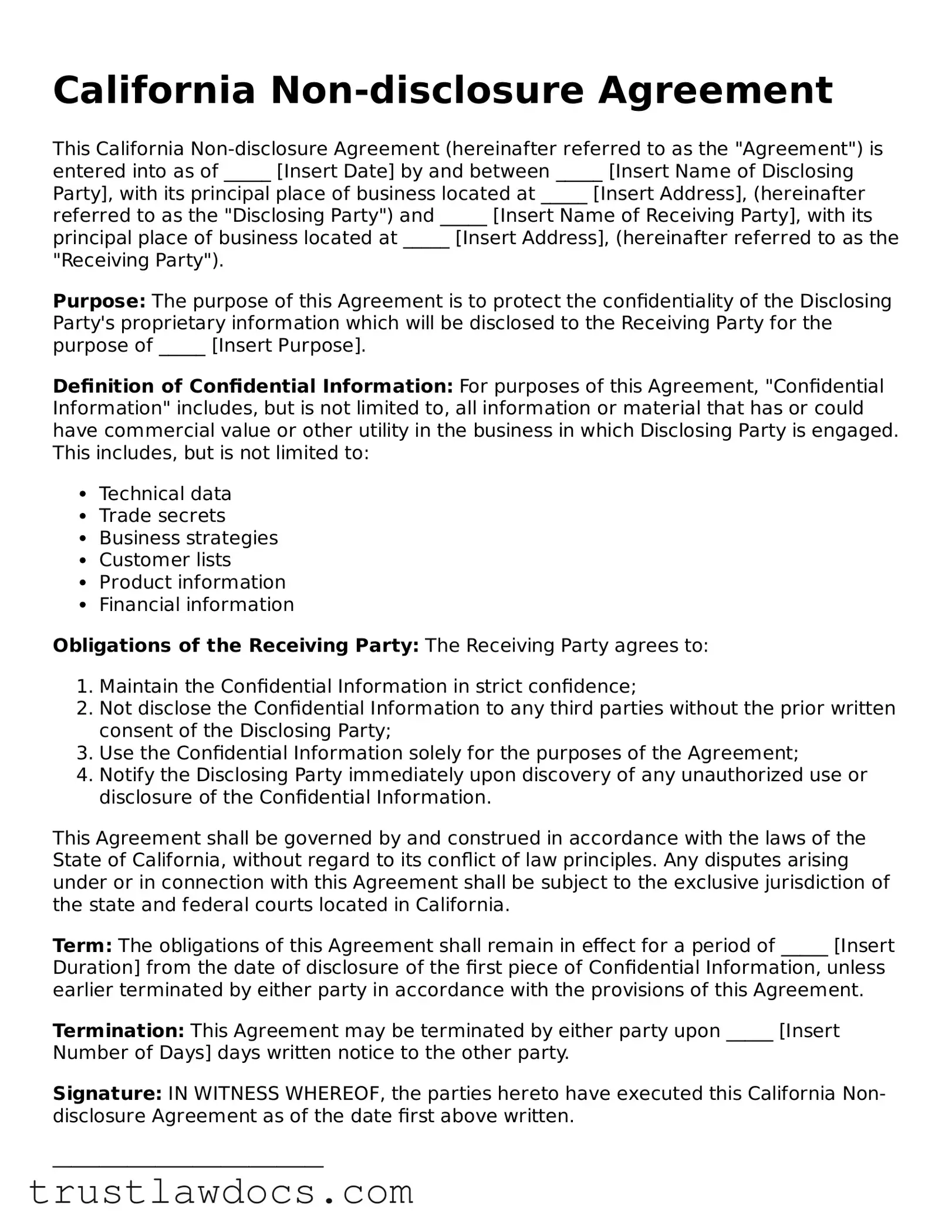What is a California Non-disclosure Agreement (NDA)?
An NDA, or Non-disclosure Agreement, in California is a legal contract between at least two parties that outlines confidential material, knowledge, or information that the parties wish to share with each other for certain purposes, but wish to restrict access to or by third parties. The goal is to protect sensitive information from being disclosed to the outside world.
When should I use an NDA in California?
You should use an NDA whenever you need to protect sensitive information that will be shared between parties, especially during business negotiations, partnerships, or when hiring new employees that will have access to confidential information. This ensures that the information cannot be shared with others who might use it to your disadvantage.
Is a California NDA legally binding?
Yes, an NDA in California is a legally binding contract. If a party breaks the agreement by disclosing confidential information without permission, they can be sued for damages or be required to stop the prohibited actions as outlined in the contract.
What key elements should be included in a California NDA?
A california NDA should clearly define the confidential information, specify the obligations of the receiving party, outline any exclusions from confidentiality, set the term (duration) of the NDA, and include clauses on remedies for breaches, and jurisdictional provisions in case of legal disputes.
Can any type of information be protected under a California NDA?
While many types of information can be protected, there are exceptions. Generally, information that is publicly available, already known by the receiving party before the agreement, or independently developed without access to the confidential information, cannot be protected under an NDA.
How long does a California NDA last?
The duration of an NDA can vary based on the agreement of the parties involved. Some NDAs may last indefinitely, especially if the information must remain confidential forever. Others may expire once the information becomes publicly known or after a certain period of time.
Can I enforce a California NDA against someone in another state?
Yes, it is possible to enforce a California NDA against someone in another state. However, enforcement across state lines can be more complex and may require litigation in federal court or consideration of the jurisdiction and choice of law clauses in the NDA.
Do I need a lawyer to create a California NDA?
While it's not mandatory to hire a lawyer to create an NDA, consulting with one can ensure that the agreement is legally sound and fully protects your interests. A lawyer can help tailor the NDA to your specific needs and circumstances.
Can an employee refuse to sign a California NDA?
Yes, an employee can refuse to sign an NDA. However, an employer can make signing the NDA a condition of employment. If the employee still refuses, the employer can choose not to hire the employee or terminate their employment if they are already hired.
What happens if someone violates a California NDA?
If someone violates a California NDA, the non-breaching party can take legal action against them. This may include suing for damages caused by the breach or seeking an injunction to prevent further disclosure of the confidential information.
